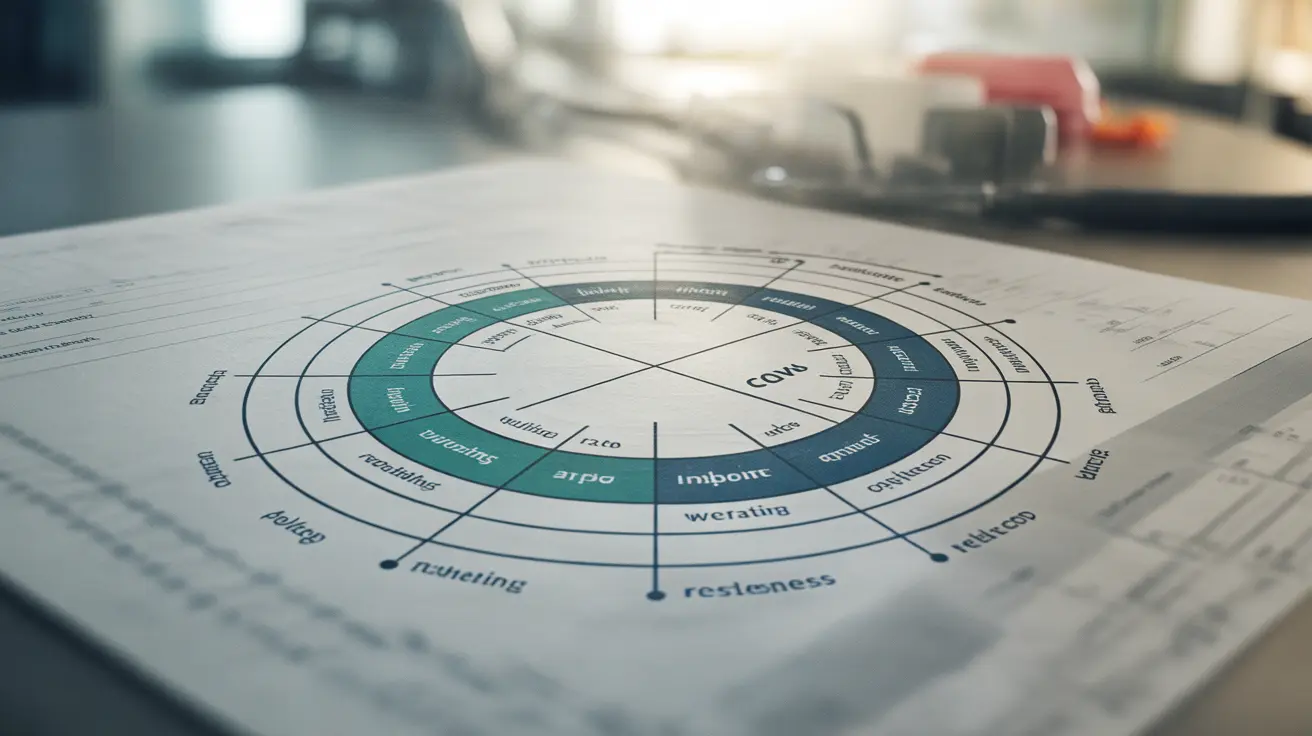Opioid withdrawal can be a challenging experience, but having a clear understanding of how it's measured and monitored can help guide treatment and improve outcomes. The opioid withdrawal score, particularly through tools like the Clinical Opioid Withdrawal Scale (COWS), provides healthcare providers with a standardized way to assess and track withdrawal severity.
This comprehensive guide will explore how withdrawal scoring works, what symptoms are evaluated, and how this information helps shape treatment decisions during the recovery process.
What is an Opioid Withdrawal Score?
An opioid withdrawal score is a numerical measurement that helps healthcare providers assess the severity of withdrawal symptoms in patients discontinuing opioid use. The most commonly used tool is the Clinical Opioid Withdrawal Scale (COWS), which evaluates multiple physical and psychological symptoms to generate a total score indicating withdrawal intensity.
Components of Withdrawal Assessment
Physical Symptoms Evaluation
The scoring system carefully measures several physical symptoms, including:
- Pulse rate and blood pressure
- Sweating
- Tremors
- Pupil size
- Bone and joint aches
- Gastrointestinal upset
- Runny nose and tearing
Psychological Symptoms Assessment
Mental and emotional symptoms are also tracked, including:
- Anxiety or irritability
- Restlessness
- Yawning
- Sleep disturbances
- Cravings
Understanding Score Ranges
Withdrawal scores typically fall into different severity categories:
- Mild withdrawal: 5-12 points
- Moderate withdrawal: 13-24 points
- Moderately severe withdrawal: 25-36 points
- Severe withdrawal: More than 36 points
How Scores Guide Treatment
Healthcare providers use withdrawal scores to make important treatment decisions, including:
- Determining appropriate medication dosing
- Adjusting treatment protocols
- Identifying when additional medical support is needed
- Planning the timing of interventions
Monitoring Progress Through Scoring
Regular score assessment helps track recovery progress by:
- Documenting symptom changes over time
- Identifying treatment effectiveness
- Recognizing potential complications early
- Adjusting support measures as needed
Frequently Asked Questions
What is the Clinical Opioid Withdrawal Scale (COWS) and how is it used to assess withdrawal severity?
The Clinical Opioid Withdrawal Scale (COWS) is a standardized assessment tool that healthcare providers use to measure withdrawal severity. It evaluates 11 common withdrawal symptoms, assigning points based on intensity. The total score helps determine the level of withdrawal and guides appropriate treatment responses.
What symptoms are included in the opioid withdrawal score and how do they reflect the withdrawal process?
The opioid withdrawal score includes both physical symptoms (such as pulse rate, sweating, tremors) and psychological symptoms (anxiety, restlessness, cravings). These symptoms reflect the body's adjustment to functioning without opioids and help providers track the progression of withdrawal.
How long do opioid withdrawal symptoms typically last and how does the COWS score change over time?
Opioid withdrawal symptoms typically last 5-7 days for short-acting opioids and up to 14 days for long-acting opioids. COWS scores usually peak within 72 hours of the last opioid use and gradually decrease as symptoms improve. However, individual experiences may vary.
What treatment options are guided by the opioid withdrawal score during detox and withdrawal management?
Treatment options guided by withdrawal scores include medication-assisted treatment (MAT), supportive care measures, and timing of interventions. Higher scores might indicate the need for more intensive medical support, while lower scores might allow for more conservative management approaches.
How can understanding my opioid withdrawal score help prevent relapse and improve recovery outcomes?
Understanding your withdrawal score helps you and your healthcare team track progress, anticipate challenging periods, and adjust treatment as needed. This knowledge can help you prepare for difficult phases, maintain motivation, and engage more effectively in your recovery process.
Remember that withdrawal scoring is just one tool in the recovery process. Always work closely with healthcare providers to ensure safe and effective withdrawal management tailored to your individual needs.




